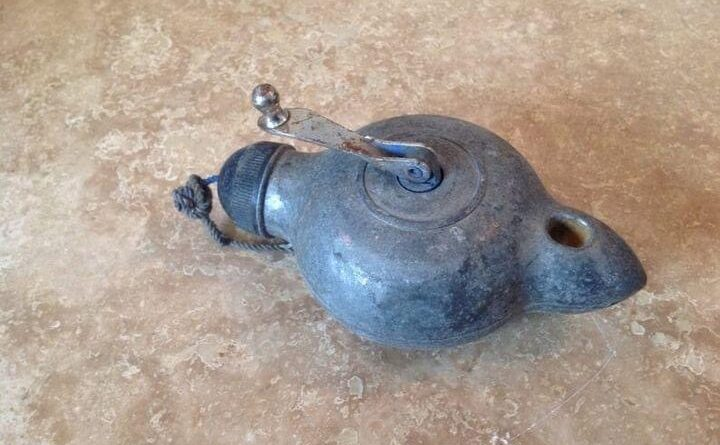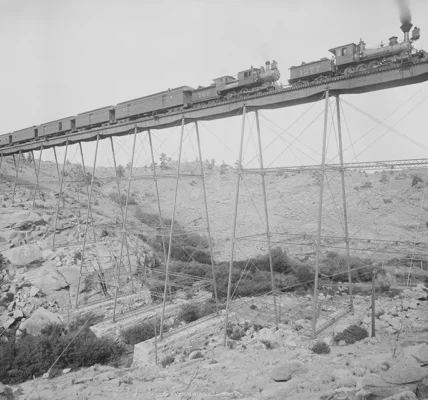Vintage chalk line tools have played a pivotal role in construction and craftsmanship for well over a century. Known for their ability to create precise straight lines over long distances, these tools have been essential in many trades, from woodworking to masonry. Despite modern technological advancements, vintage chalk line tools continue to be valued for their simplicity, reliability, and ability
The History of Chalk Line Tools: From Simplicity to Innovation

The chalk line tool dates back to 19th century, during a period of industrial growth and innovation. As construction technologies advanced, the need for accurate measurements and straight lines became increasingly critical. Early versions of the chalk line tool were relatively simple: a spool with a string coated in chalk powder. Despite this straightforward design, these tools revolutionized how tradespeople marked surfaces, especially on materials like wood and masonry.
By the early 20th century, manufacturers began to enhance the design and durability of chalk line tools. These improvements were driven by the need for more robust tools that could withstand frequent use on busy construction sites. The introduction of sturdier materials, retractable lines, and ergonomic grips allowed the chalk line tool to become more user-friendly and durable. This evolution enabled workers to mark lines with greater efficiency and precision, setting the standard for accuracy in construction and craft.
How Vintage Chalk Line Tools Work: A Simple Yet Effective Mechanism
Using a vintage chalk line tool is a straightforward process that delivers accurate results. The tool typically consists of three main components: a spool to hold the chalk powder, a line reel, and a string. The chalk-coated string is stretched between two points and then snapped against the surface. This action leaves a clear, straight line, providing a reference for cutting, aligning, or installing materials.
One of the reasons why chalk line tools have remained popular for so long is their ease of use. Whether you’re a seasoned tradesperson or a DIY enthusiast, you can achieve accurate alignment with just a few simple steps. These tools are especially valuable in construction, where marking straight lines on walls, floors, or ceilings is essential for ensuring the proper alignment of materials. For instance, chalk lines help carpenters align boards, set tiles in perfect rows, and cut materials with precision.
The Role of Chalk Line Tools in Various Trades

The versatility of the chalk line tool makes it indispensable in numerous trades. In construction, it is often used to establish reference lines before cutting or installing materials, ensuring both structural integrity and aesthetic appeal. This can be particularly important when working with large surfaces, such as walls or floors, where maintaining straight lines is essential for accurate installation.
In woodworking, chalk lines help artisans create precise cuts, ensuring uniformity in their designs. The tool allows craftsmen to mark straight lines on wood surfaces quickly, whether they are building furniture, installing cabinetry, or creating intricate carpentry designs. In fact, many woodworkers continue to rely on chalk line tools to this day because of their precision and ease of use.
Even hobbyists and DIY enthusiasts benefit from using chalk line tools. Whether you’re laying tiles in your bathroom or designing an outdoor project, these tools provide the guidance needed for achieving professional-looking results. They are simple, affordable, and effective, making them a go-to tool for anyone involved in precision work.
Why Vintage Chalk Line Tools Continue to Be Relevant
With the rise of advanced measuring tools and laser-guided systems, you might think that vintage chalk line tools would have fallen out of favor. However, this is far from the case. Many professionals and craftsmen continue to use chalk line tools because of their simplicity and reliability. Unlike electronic devices that rely on batteries or delicate components, a chalk line tool works consistently in virtually any environment.
Chalk line tools require minimal maintenance and can last for years, making them an excellent investment. Their ability to perform consistently, even under tough conditions, means they are still a staple in toolboxes worldwide. While newer technologies have their place, many tradespeople prefer the hands-on approach that vintage chalk line tools offer, allowing them to maintain complete control over their work.
The Legacy of Craftsmanship: Chalk Line Tools as Collectibles

Beyond their practical application, vintage chalk line tools hold a certain nostalgic value. Collectors and enthusiasts often seek out these tools for their historical significance and craftsmanship. Many early models were built to last, featuring robust materials and intricate designs that reflect the ingenuity of the time. These tools represent an era when manual labor and precision craftsmanship were highly valued, and they continue to be appreciated for their enduring durability.
For collectors, vintage chalk line tools are more than just functional items; they are pieces of history. Each tool tells a story of a time when workers relied on simple yet effective mechanisms to complete complex tasks. Whether found in antique stores or passed down through generations, these tools are a testament to the lasting appeal of well-crafted instruments.
How Vintage Chalk Line Tools Influenced Modern Design
The influence of vintage chalk line tools can be seen in the design of modern marking tools. While laser levels and other digital devices may offer more high-tech features, they still rely on the basic principles established by chalk line tools: precision, alignment, and ease of use. Many of today’s advanced tools were inspired by the functionality of the chalk line, which set the standard for accuracy in construction and craft.
Furthermore, the chalk line tool has had a lasting impact on how tradespeople approach their work. It has shaped the way that precision and efficiency are valued in various industries, from construction to carpentry. Modern toolmakers continue to follow the principles set by the chalk line tool, creating products that meet the same high standards of accuracy and reliability.

Conclusion: A Timeless Tool for Precision and Craft
Vintage chalk line tools represent a perfect balance between functionality and craftsmanship. From their origins in the 19th century to their continued relevance today, these tools have played a crucial role in countless trades. Whether used in construction, woodworking, or hobby projects, chalk line tools provide an easy, effective solution for marking straight lines with precision.
As we move further into the age of technology, the legacy of vintage chalk line tools reminds us that some solutions don’t need to be reinvented. Their simple design, practical functionality, and enduring appeal make them more than just tools—they are symbols of a time when quality craftsmanship was paramount. For both professionals and collectors, vintage chalk line tools continue to be valued for their reliability, accuracy, and timeless significance.


